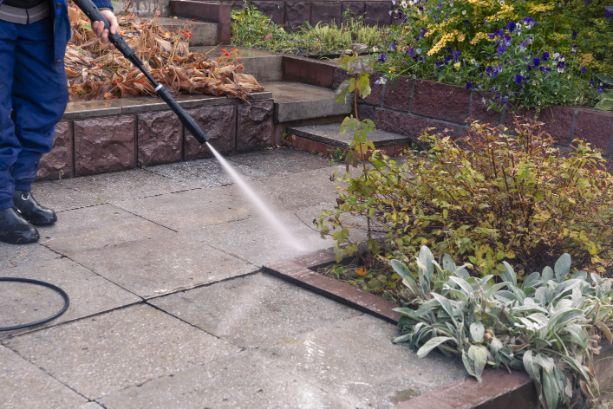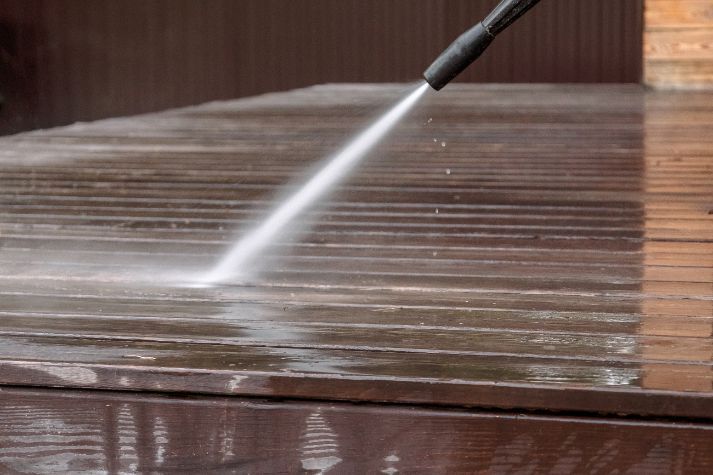The science behind pressure washing lies in the combination of water pressure and flow rate, which work together to remove stubborn stains and debris. The technology has been developed to optimise the cleaning process while minimising water waste and protecting surfaces from damage.
With the right equipment and techniques, pressure washing can effectively clean a wide range of surfaces and provide a powerful, efficient solution for keeping outdoor spaces looking their best.
For this post, we’ll talk more about how a pressure washer works, the different types of pressure washing equipment, and techniques to clean different surfaces.
How Does a Pressure Washer Work?
A pressure washer works by utilising high-pressure water to clean surfaces. It is typically comprised of a motor that drives a pump, which pressurises water from a garden hose and propels it through a high-pressure hose and spray wand.
The water pressure can be adjusted and can range from a few hundred PSI (pounds per square inch) to over 3,000 PSI, depending on the machine. The high-pressure water blast is capable of removing dirt, grime, and other debris from a range of surfaces, including concrete, wood, and metal. Some pressure washers also have the ability to heat water, which can make cleaning even more effective.
Read about the importance of pressure washing by checking out our blog here.

Types of Pressure Washing Equipment
The different types of pressure washing equipment are designed for specific cleaning tasks. Some of the most common types are:
- Electric pressure washer: This type of pressure washer uses electricity to power the motor, making it suitable for lighter cleaning tasks such as washing cars and outdoor furniture.
- Gas pressure washer: Gas-powered pressure washers are more powerful than electric washers and are ideal for heavy-duty cleaning tasks such as cleaning decks, sidewalks, and buildings.
- Hot water pressure washer: As the name suggests, this type of pressure washer has the ability to heat water. This makes it ideal for cleaning oily surfaces since hot water can easily dissolve substances.
- Portable pressure washer: This type of pressure washer is made for mobility and is best for cleaning tasks that require you to move around a lot.
- Surface cleaner: A surface cleaner is a specialised attachment for a pressure washer that is designed to clean large, flat surfaces such as driveways, patios, and decks.

Various Pressure Washing Techniques
The different pressure washing techniques used in cleaning various surfaces are:
- Soap spraying: This technique involves mixing soap and water and then using the pressure washer to apply the solution to the surface being cleaned. This is best for removing grease and oil from surfaces.
- Rinsing: This straightforward technique involves high-pressure water to blast away dirt and debris from a surface. It is best for removing dirt and grime from surfaces such as sidewalks, driveways, and buildings.
- Surface scrubbing: This technique involves using a rotating brush attachment on the pressure washer to scrub a surface and remove dirt and debris. This is best for removing tough stains and debris from concrete, wood, and other surfaces.
Want to learn about pressure washing tips? Read our blog on the topic today.
